-Submitted by Dahlia
(Plain Rice, Everyday Cooked Rice, Cooking Rice, Steaming Rice, Preparing White Rice, Sadam, Choru)
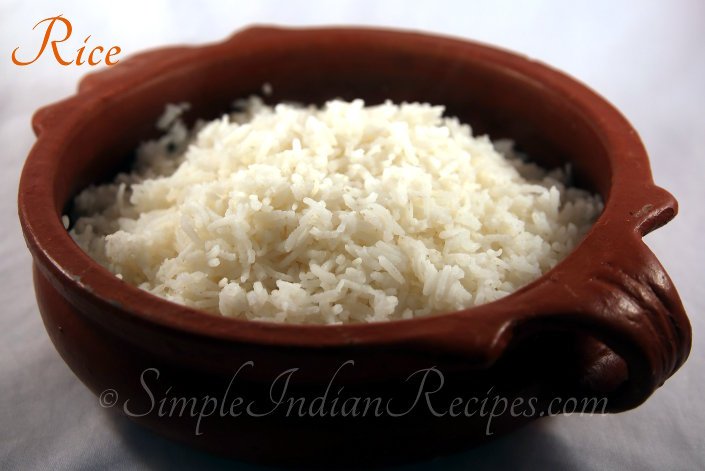
Rice is an integral part of Indian daily diet. Some people just cannot survive without rice. Cooking white rice is one of the basic things to learn if you want to try Indian food. These days many beginners struggle to get their white rice perfect. I wanted to make a post about making basic white rice for quite some time. Rice can be cooked in many ways depending on your convenience. I've given below a detailed explanation of the different methods to cook rice.
Want to know more about Rice?? Click to read about the types of rice in detail.
Some of the general rules about cooking rice are:
- Take the rice in a pot and fill with water. Rub the rice grains with your fingers to wash it thoroughly. Once the water becomes cloudy, drain it out carefully. Repeat this 2-3 times until the water runs clear. This step will remove any dirt, foreign objects, loose husks and even the excess starch from the rice.
- Soaking the rice improves the texture of rice greatly. It makes it longer, fluffier and also helps to keep the grains separate. You can soak the rice for 15- 30 minutes depending on the time you have. If you are in a hurry, you may proceed without soaking too.
- As a general rule, for 1 cup of rice, the liquid (water) needed for cooking the rice is more or less 2 cups. This may vary depending on the type of rice. Usually 1 cup of basmati rice takes 1.5 cups of water, 1 cup of Rosematta rice takes 3 cups of water, 1 cup of raw rice takes 3 cups of water and 1 cup of boiled rice takes 2.5 cups of water to cook. While cooking in rice cooker or microwave, you may have to add 1/2 cup extra water. So take the amount of liquid depending on the type of rice you use.
- One more thing you have to keep in mind is that if you soak the rice for half an hour, reduce the water content by 2-3 tbsp to compensate for the water that the rice would have absorbed.
- Rice expands 3 times while cooking. So plan and use a big vessel accordingly.
- Do not keep checking the rice while it is getting cooked. The steam formed will escape preventing it from cooking properly.
- Adding salt and oil is totally optional. If you plan to make some variety rice, I recommend adding oil and salt to keep the grains separate. You can also add some basic spices like cloves, bay leaf, cumin seeds etc along with the rice. For serving with curries, you really don't have to add anything. However, I recommend adding just a little salt alone.
Recipe For Cooking Perfect Steamed Rice
Ingredients
- Rice – 1 cup
- Water – 2 cups (or as needed for different methods like I have mentioned above)
- Salt – ¼ tsp
- Oil – 1 tsp (optional)
Method 1: Stove-top Draining Method
This is the age old method used by our grandmother’s. The texture of the rice comes out the best using this method.
- Take a deep pot or a big vessel with plenty of water. For cooking 1 cup of rice, take around 4-5 cups of water.
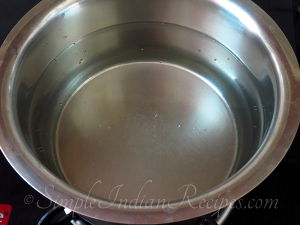
- Bring it to a vigorous boil. Now add the salt, the soaked rice and oil (if needed).
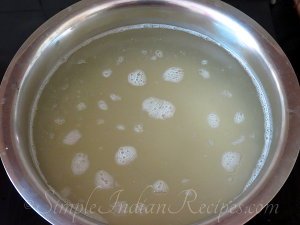
- Cook uncovered. After it comes to boil again, you can see the rice grains raising to the top and moving vigorously with the water.
- Finally when the rice is cooked, the rapid movement of rice subsides and the cooking liquid becomes whitish in colour. It is due to the starch of the rice released into the liquid.

- You need to carefully scoop out a few rice grains using a spoon and press between your palm and forefinger to see if it is cooked soft. If done, drain the rice using a colander.
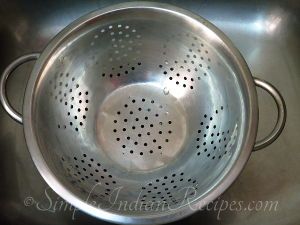
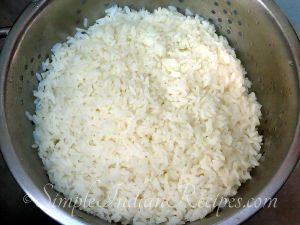
- Wait for 5 minutes till all the liquid is completely drained before transferring the rice to the serving dish. You can place a vessel under the colander to collect the water drained out.
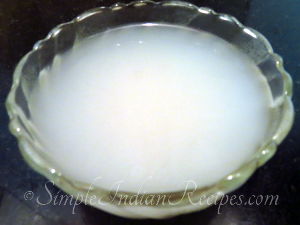
- The drained out liquid is called Rice water in english, Kanji Vellam in malayalam or Sadam vadicha kanji in tamil. Traditionally, little salt is added to this water and served as a beverage or gruel to kids, old and sick people. It is supposed to be very healthy. However, this kanji vellam tastes best only when drained out of brown rice or rosematta rice since only these rice varieties are packed with nutrition. My grandmother also used the rice water as a homemade starch to dunk her cotton sarees before drying them. This rice water was also used to wash the hair in olden days instead of shampoos. It gave a shiny and healthy look to the hair.
Method 2: Stove-top Absorption/Steeping Method
- Take the soaked rice, salt and required amount of water in a pan. Bring it to a boil.
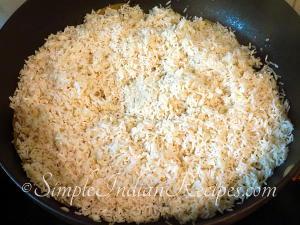
- Cook with the lid partially covered on medium heat till most of the liquid is absorbed.
- Now, mix the rice once, reduce heat to low and cover the pan fully.
- Let it cook for 10 minutes undisturbed. By now all the water would have been absorbed and the rice grains will stand upright.
- Switch off, fluff the rice with a wooden spoon or fork and let it rest for another 5 minutes before serving. In the picture below, I have added few whole spices since I wanted to make a pulao with it.
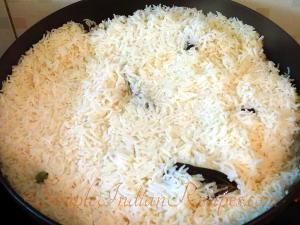
Method 3: Pressure Cooker Method
Cooking with pressure cooker is the fastest method of making rice. While cooking rice in the pressure cooker, you have two options. The rice can be cooked directly in the pressure cooker or in a vessel placed inside the pressure cooker. In India, many brands of pressure cooker come with a 3 tier vessel to cook rice, dal and vegetables all in one go.
- Whichever option you prefer, take the soaked rice and measured amount of water in the pressure cooker or vessel.
- If using a separate vessel, add additional ½ cup water in the bottom of the cooker, place a stainless steel stand or the plate that comes with the cooker and then place the vessel with rice.
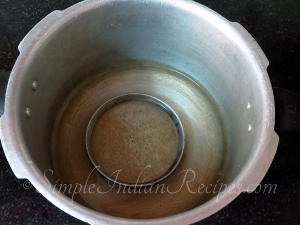
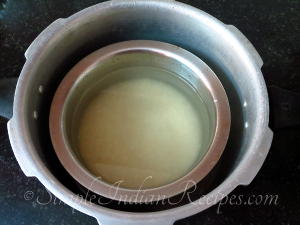
- Lock the cooker and switch on the stove. Once the steam starts coming through the vent, put the cooker weight in its place. Some pressure cooker models do not have the weights separate. In that case do not bother. See to it that steam does not escape through the lid, in which case the rubber gasket is not properly fixed.
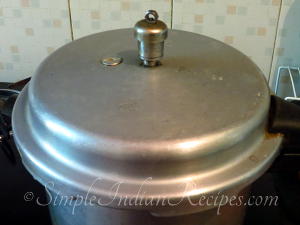
- Cook till you hear 2-3 whistles and switch off. In models which do not have the provision to whistle, reduce the flame after you put the weights and pressure builds up. Cook on low flame for 10 minutes and switch off. Cook a little longer if the quantity of rice is more.
- Let the pressure release by itself before opening the lid. Rice is ready to be served.
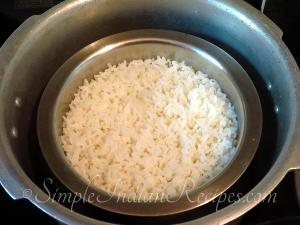
Some people use the pressure cooker to speeden the cooking process for rice that takes a longer time like the brown rice, rosematta rice etc. Hot boiling water is then added to the cooked rice and drained using a colander. This will remove any excess starch keeping the grains separate.
Method 4: Rice Cooker Method
- Take the soaked rice, water and salt in the vessel that comes with the rice cooker. I like to add 1/2 cup extra water when cooking in rice cooker.
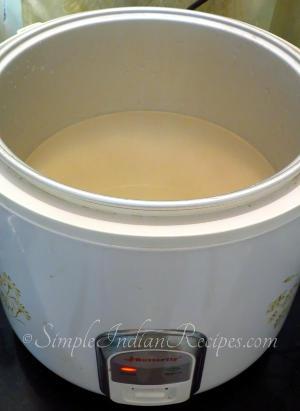
- Switch on the rice cooker.
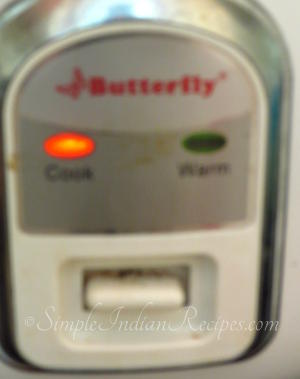
- It will automatically go off (goes to warm) when all the water is evaporated and stays in the ‘Keep Warm’ mode.
Method 5: Microwave Method
- Take a big microwave safe bowl and take the rice in it.
- Add 2.5 cups of water for 1 cup of rice. Add salt and oil.
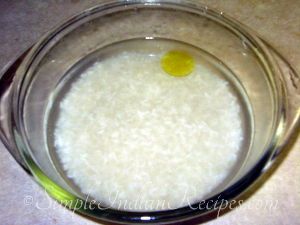
- Microwave on high power for 5 minutes uncovered.
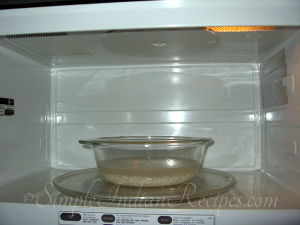
- Close with a microwave safe lid or with a paper towel. Continue to microwave on half power for another 10 minutes. If the rice is very starchy, it will boil over. That's the reason we cook in half power.
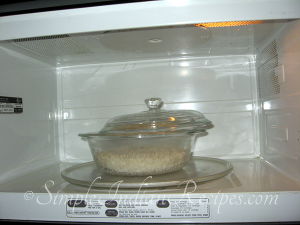
- After 10 minutes, check through the glass of the microwave if there is any liquid left out. If so, microwave for another 2 or 3 minutes. Do not open the microwave and let the steam escape. The steam created is very important to cook the rice properly.
- By now, all the liquid must have got absorbed. Let it rest for 10 minutes before opening the microwave.The steam created inside will continue to cook and soften the rice.
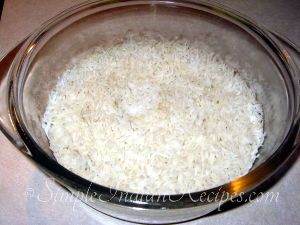
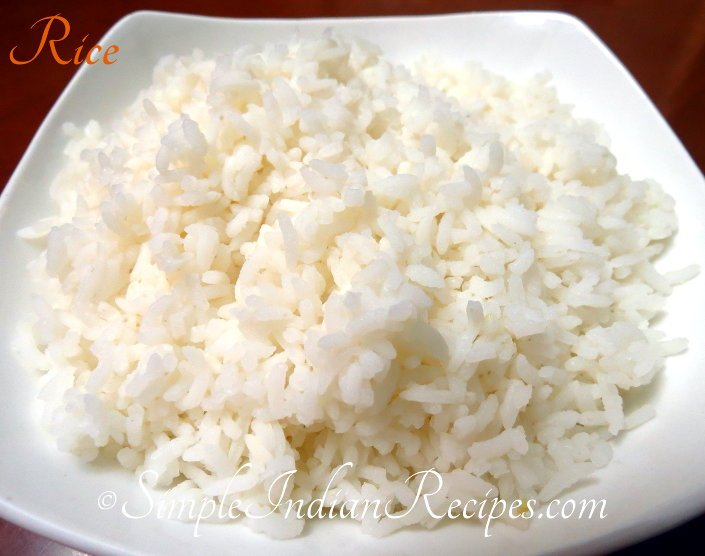
Serving Suggestion
Rice is typically served with some curry and side dishes. Do check out the different options for veg curries, non veg curries, veg side dishes and non-veg sidedishes to serve with rice. Below is the picture of Kerala Rosematta rice (Kuthari Choru) served with curry and vegetable side dishes.
Cooked rice can also be used to make many variety rice dishes like lemon rice, fried rice, curd rice etc.
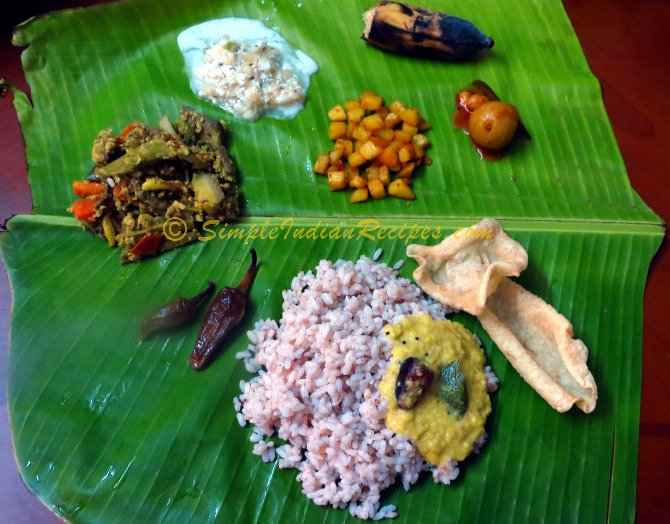
Rice Recipes